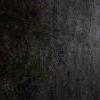
no_connection
-
Posts
385 -
Joined
-
Last visited
Reputation Activity
-
 no_connection got a reaction from webrunner5 in Long-term Archiving for Family Photos & Videos
no_connection got a reaction from webrunner5 in Long-term Archiving for Family Photos & Videos
Whatever you decide, add a checksum of every file so you can verify if it's intact or not. And make multiple copies so you can find one copy of a file that is not corrupt.
I have used this and like it. http://www.exactfile.com/
Good to have for files on computer too. It's good to know that your source material is still intact later in a project or after transfer.
-
 no_connection got a reaction from Davey in Long-term Archiving for Family Photos & Videos
no_connection got a reaction from Davey in Long-term Archiving for Family Photos & Videos
Whatever you decide, add a checksum of every file so you can verify if it's intact or not. And make multiple copies so you can find one copy of a file that is not corrupt.
I have used this and like it. http://www.exactfile.com/
Good to have for files on computer too. It's good to know that your source material is still intact later in a project or after transfer.
-
 no_connection got a reaction from Liam in How do you grain?
no_connection got a reaction from Liam in How do you grain?
Using just overlay will leave dark and bright areas clipped without grain. I made a simple filmgrain network in Fusion 8.
I tried to emulate the 35mm v2 HolyGrain scan as my source grain. I think it's close enough.
Use the blend slider on the composit nodes to adjust to the material and desired effect.
BlackGrain and WhiteGrain adds grain back at the darkest and lightest part of the image. It will look bad if overdone so adjust carefully to add just a little grain, this will ensure that nothing is clipped at ether end, it will be monochromatic BW as grain at the extreme don't really inherit any color information.
The levels nodes can be used to adjust how the black and white grain clips if desired. But I think that looks digital really fast.
FilmGrain.comp
-
 no_connection got a reaction from andrgl in Amazing new Skintone Control Product?
no_connection got a reaction from andrgl in Amazing new Skintone Control Product?
So they can do magic with skin tones but have the worst sounding intro ever, seriously that hurt my ears! A first poster magically posts the promotion video that have 71 views and raves about customer support. Sounds legit.
-
 no_connection got a reaction from dahlfors in Amazing new Skintone Control Product?
no_connection got a reaction from dahlfors in Amazing new Skintone Control Product?
So they can do magic with skin tones but have the worst sounding intro ever, seriously that hurt my ears! A first poster magically posts the promotion video that have 71 views and raves about customer support. Sounds legit.
-
 no_connection got a reaction from jonpais in Amazing new Skintone Control Product?
no_connection got a reaction from jonpais in Amazing new Skintone Control Product?
So they can do magic with skin tones but have the worst sounding intro ever, seriously that hurt my ears! A first poster magically posts the promotion video that have 71 views and raves about customer support. Sounds legit.
-
 no_connection got a reaction from Justin Bacle in RAW vs 10bit vs 8bit
no_connection got a reaction from Justin Bacle in RAW vs 10bit vs 8bit
The problem isn't as much 8bit vs 10bit I think but the effort put into compressing the data. Good compression takes a crapload of processing power to do, while bad just breeze through at realtime speed.
If you have not, play around with Handbrake and change only the slider for compression efficiency vs encoding speed. It's under optimise video.
Even at unlimited bitrade you will notice degradation in quality unless you add some effort to the compression work.
Also proper dither made for the compression setting meaning you make the entire chain optimized makes a good difference.
-
 no_connection got a reaction from zetty in The 4K Fuji X-T2 is here
no_connection got a reaction from zetty in The 4K Fuji X-T2 is here
It seems that they are making an effort to keep artifacts and banding in check.
Here is a saturation map of XT2 compared to a clip buy fuzzynormal from the original files thread of the GX85. I could not fine the same amount of contrast/punch tho, so comparison is a little stretched.
To make a saturation map you shift hue by 180*(0.5 in fusion) with the color corrector node, then combine with difference node to the original. You then desaturate the result to grayscale. I gained it by 2 here to make it more visible.
The XT2 clip appears to be dithered and a bit smoother compared to the GX85 which is showing a bit more blocks. It is not without blocks as something have to go when compressing. But how these artifacts behave and how much effort goes in to handle them determines how much the file can be pushed around before it breaks up. This is also why flat profiles are not always a good thing.
btw saturation map works great as a mask for things.
-
 no_connection got a reaction from MattH in GH5 Prototype
no_connection got a reaction from MattH in GH5 Prototype
4k60p means less rolling shutter as it can only have 16.6ms to scan worst case.
Hopefully the yello era is over.
-
 no_connection got a reaction from Mat Mayer in Is this bone chilling timelapse shot in space onboard ISS the best ever?
no_connection got a reaction from Mat Mayer in Is this bone chilling timelapse shot in space onboard ISS the best ever?
Not timelapse but 4k from space.
-
 no_connection got a reaction from Pavel Mašek in The 4K Fuji X-T2 is here
no_connection got a reaction from Pavel Mašek in The 4K Fuji X-T2 is here
No idea on settings used. It's not horrible but not perfect ether.
https://***URL removed***/reviews/image-comparison/fullscreen?attr29_0=panasonic_dmcgx85&attr29_1=fujifilm_xt2&attr72_0=4k&attr72_1=4k&normalization=full&widget=383&x=0.20203099946552644&y=-0.5807423640597177
-
 no_connection got a reaction from User in Editing - Hitachi Hard Drives - Reading/ Writing Interruption Issue
no_connection got a reaction from User in Editing - Hitachi Hard Drives - Reading/ Writing Interruption Issue
No idea how to do it on a mac but check the SMART log on the drive. Maybe it's doing a short test, not that they should be done that often anyway.. You can also see if it is spinning down or not.
-
 no_connection got a reaction from maxmizer in how would you grade this?
no_connection got a reaction from maxmizer in how would you grade this?
I think all of them are reading the file correctly, but the two top apps think they are sending the signal to a TV and adjusting the output to match. If they read the file as 16-255 it would ether be left alone or being clipped/expanded to 0-255.
If you are using nVidia card, check settings and see if you can force output to be 0-255 range, it might be that and hardware acceleration that causes it.
I use MPC-HC so I can't help you with quicktime or VLC.
-
 no_connection got a reaction from funkyou86 in how would you grade this?
no_connection got a reaction from funkyou86 in how would you grade this?
I think all of them are reading the file correctly, but the two top apps think they are sending the signal to a TV and adjusting the output to match. If they read the file as 16-255 it would ether be left alone or being clipped/expanded to 0-255.
If you are using nVidia card, check settings and see if you can force output to be 0-255 range, it might be that and hardware acceleration that causes it.
I use MPC-HC so I can't help you with quicktime or VLC.
-
 no_connection got a reaction from funkyou86 in how would you grade this?
no_connection got a reaction from funkyou86 in how would you grade this?
I involved a few more nodes than that. Some corrections done in linear space, some in log, some by lut to add some film simulation to give colors a push..
Same grading for all shots above.
I'm just a hobbyist with an interest in a lot of things, a pro would probably put hand to forehead.
*edit* I'm not saying simple is wrong ether, if all it takes is a slight adjustment, then that is the right one.
-
 no_connection got a reaction from funkyou86 in how would you grade this?
no_connection got a reaction from funkyou86 in how would you grade this?
I don't really know what the video is about or what you want to say with the picture mood. Make the exposure work for the mood and add character.
-
 no_connection got a reaction from frontfocus in The 4K Fuji X-T2 is here
no_connection got a reaction from frontfocus in The 4K Fuji X-T2 is here
It seems that they are making an effort to keep artifacts and banding in check.
Here is a saturation map of XT2 compared to a clip buy fuzzynormal from the original files thread of the GX85. I could not fine the same amount of contrast/punch tho, so comparison is a little stretched.
To make a saturation map you shift hue by 180*(0.5 in fusion) with the color corrector node, then combine with difference node to the original. You then desaturate the result to grayscale. I gained it by 2 here to make it more visible.
The XT2 clip appears to be dithered and a bit smoother compared to the GX85 which is showing a bit more blocks. It is not without blocks as something have to go when compressing. But how these artifacts behave and how much effort goes in to handle them determines how much the file can be pushed around before it breaks up. This is also why flat profiles are not always a good thing.
btw saturation map works great as a mask for things.
-
 no_connection got a reaction from John_Harrison in The 4K Fuji X-T2 is here
no_connection got a reaction from John_Harrison in The 4K Fuji X-T2 is here
It seems that they are making an effort to keep artifacts and banding in check.
Here is a saturation map of XT2 compared to a clip buy fuzzynormal from the original files thread of the GX85. I could not fine the same amount of contrast/punch tho, so comparison is a little stretched.
To make a saturation map you shift hue by 180*(0.5 in fusion) with the color corrector node, then combine with difference node to the original. You then desaturate the result to grayscale. I gained it by 2 here to make it more visible.
The XT2 clip appears to be dithered and a bit smoother compared to the GX85 which is showing a bit more blocks. It is not without blocks as something have to go when compressing. But how these artifacts behave and how much effort goes in to handle them determines how much the file can be pushed around before it breaks up. This is also why flat profiles are not always a good thing.
btw saturation map works great as a mask for things.













